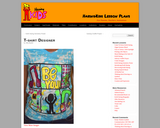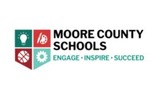
Students will learn about soft sculptural elements by constructing animals made from reused items.
- Subject:
- Arts Education
- Visual Arts
- Material Type:
- Lesson Plan
- Provider:
- Incredible Art Department
- Author:
- Lynne Spence
- Date Added:
- 02/26/2019


Students will learn about soft sculptural elements by constructing animals made from reused items.

This article contains tips, examples and guidance to help students produce an A* grade GCSE or A Level Art sketchbook. It outlines best practice in terms of annotation, content and page layout, and gives ideas and recommendations for students of any discipline (including Painting / Fine Art, Graphic Design, Sculpture, Printmaking, Photography, Textiles and Fashion students). It is likely to benefit those studying under a range of examination boards, as well as those producing sketchbooks for other high school qualifications, such as IB Art (the Investigation Workbook / IWB) and NCEA Level 3 Scholarship.

Toony Tool is a free web tool that works on any device with a web browser. It allows students to be creative as they create their own cartoon/realistic scenes, comic scenes, posters or memes. It does not require a login. Pictures can be uploaded as well. Students can download or share their creations.

Students are introduced to a popular toy from the nineteenth century, the hobbyhorse, through a painting by Robert Peckham and a contemporary popular children's verse. They then complete research on other toys from this time period, selecting one to compare to its closest modern-day equivalent. Then, they draw a portrait of themselves with a favorite toy or object.

Students recognize various symbols and themes in daily life.

Students will learn about relief printmaking in this lesson creating Mandalas.

With this resource from the Keith Haring Foundation, students take on the role of t-shirt designer— “Keith Haring Styleâ€. The lesson's goal is for students to pretend that they are reopening the Pop Shop in NYC, which closed in 2005. They are challenged to design and showcase new and improved t-shirt that is marketable to sell.

Students examine Paul Gauguin's self-portraits and letters to learn about the individual who created them and consider how first-person art forms (self-portraits, diaries, letters, journals) aid the process of self-discovery. Then, they compare two of his self-portraits using a Venn diagram and produce their own symbolic self-portrait. Included in this resource is a link to a Gauguin podcast, online gallery tour feature, and high resolution image.

In this activity, students learn about traditional elements of the Kwanzaa holiday and then create a multicultural mat showing umoja, or unity, among people. Students will also research the other six Kwanzaa principles and prepare a presentation to share information with classmates.

Students see how with juse one set of directions, everyone in the classroom will come up with very unique workds of abstract art.

Students examine Vincent van Gogh's self-portraits and letters to better understand the artist's life story and personality. Then, they paint two Van Gogh-style self-portraits to show two parts of their own personality and write a letter describing the one that reveals their true character best. Included in this resource is a link to more letters from Van Gogh and the Van Gogh Museum in Amsterdam, a short audio tour about the featured work, and high resolution image. This lesson also contains opportunities for French language integration and a reflection/expressive writing extension.

The purpose of this course is to provide a project-based visual arts program, which guides students to achieve the standards in the visual arts and career technical training, by providing students with the technical instruction and practical experiences for aspiring video and film makers in the production of film, video, and new media projects for business and entertainment. Students experience both the creative and technical aspects of filmmaking in conjunction with learning about historical and contemporary traditions and conventions.Students are instructed on the three stages of project creation. In pre-production, students learn the basic principles of story development, screenplay writing, storyboarding, scheduling and budget planning. Instruction in the production stage includes basic visual composition, color theory, set up and operation of camera, sound, and lighting equipment. Students learn to use cutting-edge software applications for video and audio post-production. Mastering and delivery methods, in both traditional and new media, are explored.The course also includes the basics of job shadowing, internships, and job placement. The competencies in this course are aligned with the California High School Academic Content Standards and the California Career Technical Education Model Curriculum Standards. Interdisciplinary experiences and arts activities lead to refining a personal aesthetic, and a heightened understanding of career opportunities in art and arts-related fields.

In this lesson, students will recognize that farmers can’t grow everything they might want to grow; they must choose which crops to grow and discover that the crop that is not grown is the opportunity cost.

In this series of videos, an NC Virtual educator presents on a series of Biology topics with the aid of a light board to present key concepts to students.Standards alignment for each video is included in each video title.B.CX.2.3 and 2.4 (Graphic Design and Layout)B.V.3.1. 3.2, 3.3 (One Point and Two Point Perspective)B.V.3.1, 3.2, 3.3 (Shading Techniques)B.V.1.1, 1.2 (Color Wheel and Color Harmonies)B.V.1.2, 1.4 (Elements and Principles)B.V.3.1, 3.2, 3.3 (Balance in Art)B.V.3.1. 3.2, 3.3 (Rule of Thirds)

This project is designed for students in a beginning digital photography class but could be adapted for Digital Media, and or Visual Arts Beginning. In this lesson, students will learn about Pictorialism and Alfred Stieglitz, a strong spokesperson for the style. Students will learn the characteristics of pictorialism and stage a scene in this style capturing it with a digital camera. Next, they will learn how to use Procreate to alter this photo (instead of in the traditional darkroom, a digital darkroom) so that it resembles a painting of the late 19th Century.

This project is designed for Visual Art Beginning students but can be used with any course introducing VR as a new medium. In this design process, students will create a painting using Tilt Brush in VR and will discover how the element of shape can evolve into the element of form. They will also experience how traditional painting can be very different from VR painting becoming a sculptural painting process.

Students will learn how artists select and develop a verbal and visual vocabulary in order to describe, analyze, interpret and perceive abstract imagery, music and sound.

Students explore the social concepts of parks both in this painting and their own life. They then embody a character in the painting to write from their perspective. Lastly, they select an outdoor scene that they use to document seasonal and environmental changes through writing and sketching over a long period of time.

Students will view and discuss Waking, 1984 by Gilbert and George. Working in pairs, students will gather images from newspapers and magazines depicting youth culture and style. Students will then combine the images collected by the class and create a collage showing how they think youth should be depicted by the media. Alternatively, students could create a digital collage by taking pictures of themselves and their peers. Have students discuss how their image selections reflect or represent their generation.

Use your computer skills to learn how to develop your own web page sites. This course is designed to provide the necessary skills and training for an entry level position in the field of Web Design. The class will focus on web page planning, basic design, layout, and construction (effective and ineffective), setup and maintenance of a web site, HTML, DHTML, JavaScript, and various web page and image creation tools.You will learn the basics of web design principles, digital media options, web design language (HTML), Internet uses and processes, design considerations, the impact of target market demographics, deliverables, and multiple software packages. Courses such as this can provide the skills and motivation for you to successfully complete college programs in one of several business areas. The primary purpose of this type of multi-media graphics education is to provide instruction for and about e-commerce and Internet communications through the use of Web Page Design. This is a repeatable course with progressive levels through Novice (this first level), Intermediate, and Advanced levels. You can turn this series of courses into a full Career Pathway as first an introductory, then a Concentration, and finally a Capstone course.